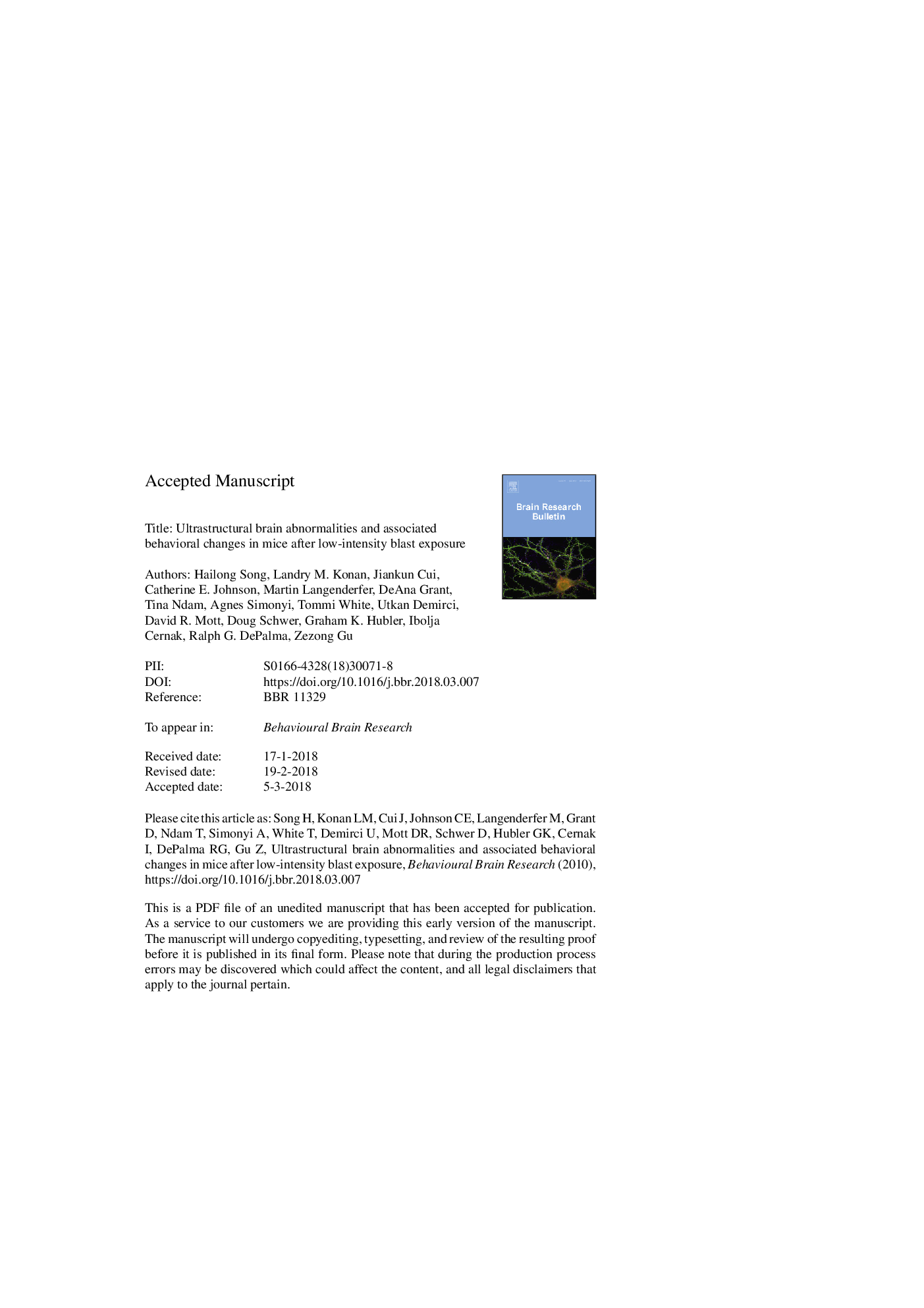ترجمه فارسی عنوان مقاله
اختلالات مغزی فوقانی ساختاری و تغییرات رفتاری مرتبط با موشها پس از انفجار با شدت کم
عنوان انگلیسی
Ultrastructural brain abnormalities and associated behavioral changes in mice after low-intensity blast exposure
| کد مقاله | سال انتشار | تعداد صفحات مقاله انگلیسی |
|---|---|---|
| 129436 | 2018 | 22 صفحه PDF |
منبع

Publisher : Elsevier - Science Direct (الزویر - ساینس دایرکت)
Journal : Behavioural Brain Research, Volume 347, 16 July 2018, Pages 148-157

